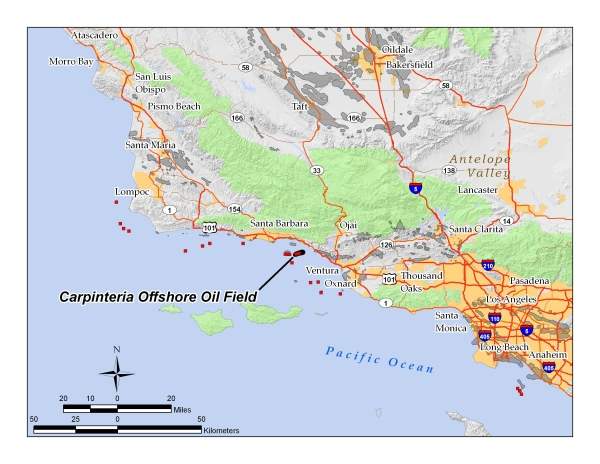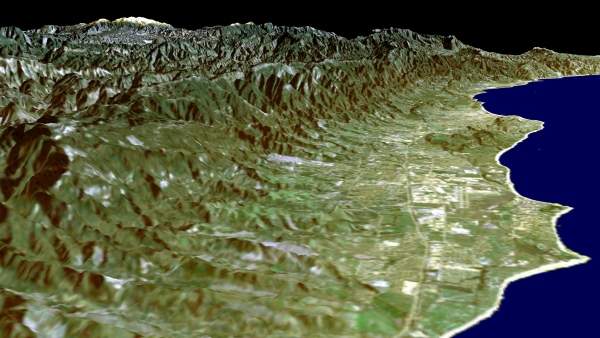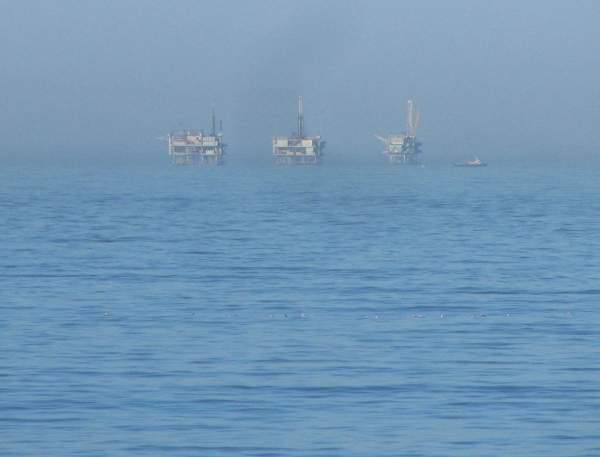The Carpinteria field lies in the Santa Barbara basin offshore of California, in the Pacific Ocean, US. It covers three state leases, PRC-4000, PRC-7911 (3150) and PRC-3133, along with two Federal leases, OCS P-0166 and OCS P-0240. The majority of the field is located in shallow water with water depths ranging from 130ft to 180ft.
Discovered in 1964 by Chevron and ARCO, the Carpinteria field has produced nearly 100 million barrels of oil over three decades from four platforms.
Carpinteria is currently producing through the Hogan and Houchin platforms at the rate of 1,000 barrels of oil a day (bpd).
Carone Petroleum, through its affiliate Pacific Operators Offshore (PACOPS), is planning to redevelop the field to increase production to 3,500bpd. The redevelopment project will extend the life of the field to 2040.
PACOPS has submitted a plan for development of the project to the Bureau of Ocean Energy Management. If approved, the project is expected to commence production in 2013.
Geology
Oil and gas reserves are found in the Repettian-Pliocene Pico Sands. The Pico Sands are deep water turbidites formed as a plunging anticline and modified by faulting and folding.
The Carpinteria field is estimated to contain 521 million barrels of oil. More than 19% of these reserves have been recovered from the field. The field still holds two million barrels of recoverable oil reserves which the redevelopment project aims to produce.
Field development
Development of the Carpinteria field commenced in 1965 with the installation of two platforms, Hope and Heidi, in state leases by Chevron. In 1966 two more platforms, Hogan and Houchin, were installed in the federal leases of the field by Philips Petroleum.
By 1969, 52 wells had been drilled at the field bringing production to a peak of 27,900bpd. In the 1970s, 42 more wells were drilled after which no new wells have been drilled. As a result, production at the field started declining and reached 1,800bpd in early 1990.
PACOPS acquired the federal lease of the field in 1990. Following the acquisition, PACOPS carried out several workovers to improve field production and commenced studies to carry out a drilling programme.
In 1996, two of the platforms, Hope and Heidi, located in state leases were decommissioned and removed from the field by Chevron due to a decline in reservoir productivity and fall in oil prices.
PACOPS launched a drilling programme in 1997. Drilling was undertaken in two fault blocks and three zones. Results of the drilling activities indicated that oil from the turbidite reservoirs can be recovered through horizontal drilling.
Based on these results, PACOPS drilled six wells and increased production to 1,550bpd by the end of 1998. Another seven wells were drilled in 2005.
The redevelopment plan aims at further developing the state leases of the field using extended reach drilling technology. PACOPS will drill 25 new operational wells from the Hogan platform.
The wells will extend to a depth of 1,400-13,000ft towards the east of the Hogan platform and will be drilled over a period of seven years. Further wells may also be developed depending upon the drilling results.
Drilling of the wells will be carried out by a 1,000bhp drilling rig with a drilling range of 13,000ft. Existing equipment will be modified to accommodate production from the field. No new infrastructure will be installed at the field.
Platform Hogan and exports
The Hogan platform is a fixed jacket platform and has been producing since 1968. It is installed in a water depth of 154ft and includes 66 well slots. The platform will be modified and installed with new equipment to accommodate additional production from the project.
A new three-phase separator, a new automated well tester and new metering will be installed on the platform. The existing two-phase separator will be modified to three-phase.
The hydrocarbons produced after the redevelopment will undergo initial processing at the Hogan platform and will be transported through the existing pipelines to the La Conchita plant for processing. Minor modifications will be carried out at the processing facility to accommodate the production from the field.










